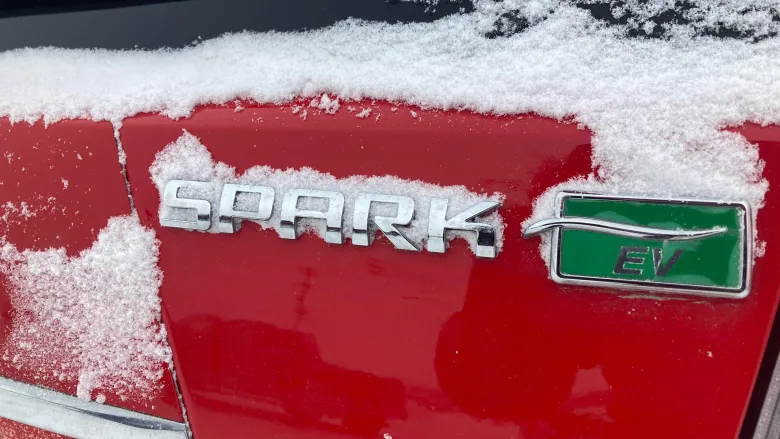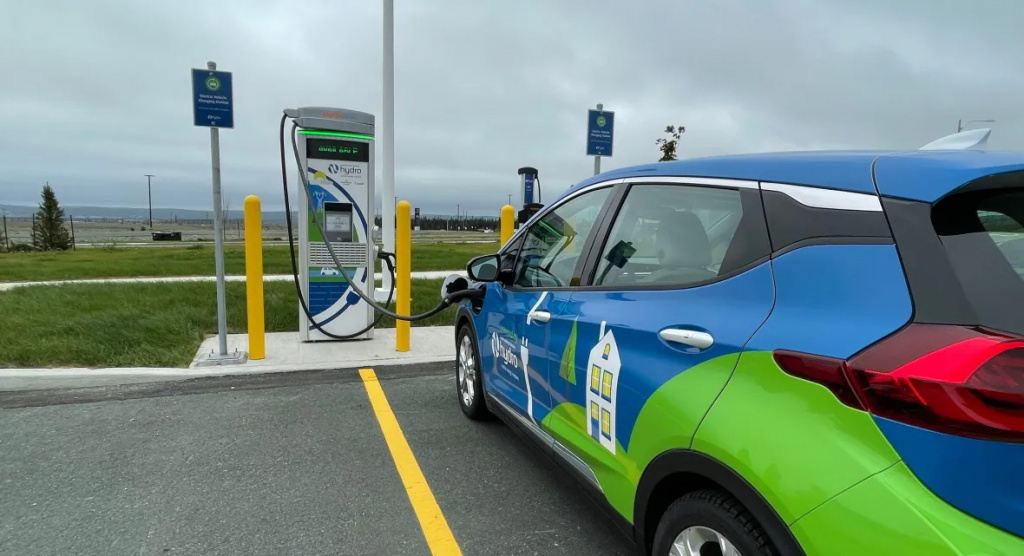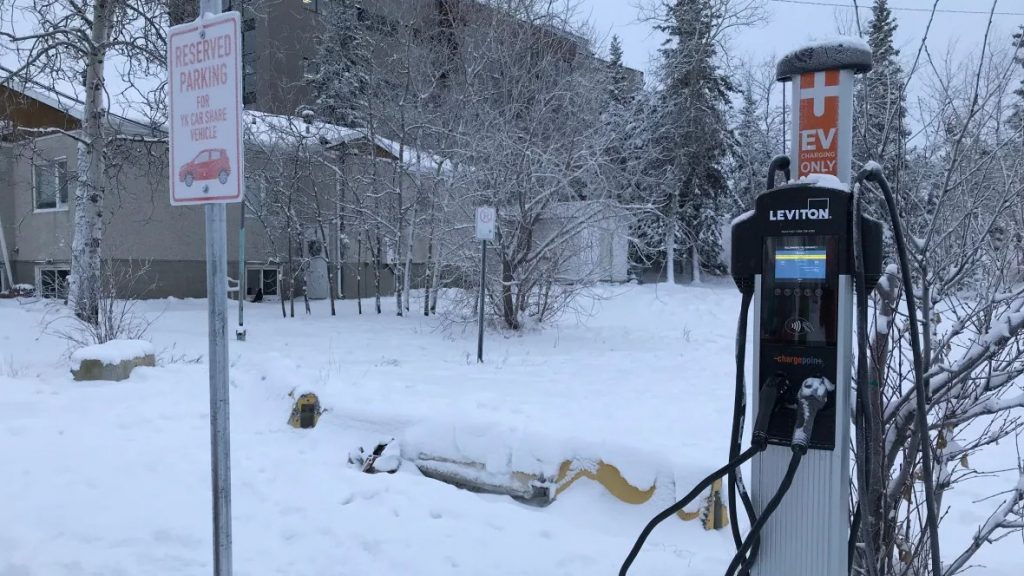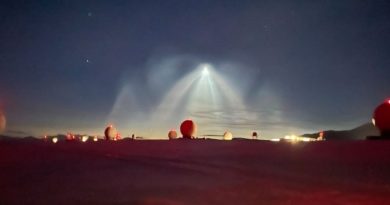Canada’s Northwest Territories investigating network of electric vehicle charging stations

Chargers roughly every 100 kilometres would make long-distance travel more feasible
Northern winters and long distances between communities pose challenges to electric vehicles in the N.W.T., but they also pose challenges to the infrastructure needed to support them.
A report commissioned by the territorial government highlights some of the uniquely northern obstacles the N.W.T. will face if it decides to build a network of fast-charging stations for electric vehicles between Yellowknife and the Alberta border.
Some of the proposed locations are in remote locations between communities, and are more than 100 kilometres away from an existing power grid. Econolor, the company hired to carry out the study, says it would be expensive and maybe even impossible to extend transmission lines to these places, and suggests using off-grid solar power charging stations at these locations.
But Robert Sexton, the territory’s director of energy, disagrees.
“I would say, without hesitation, that the tech isn’t there yet to do off grid charging stations,” he said. The solar power technology highlighted in the report is new and its performance hasn’t been tested in a northern Canadian winter — meaning it’s unclear how well it would work in the snow.
And there’d be less solar power to capture in the winter regardless.

One of the tricky spots is Birch Lake, in between Behchokǫ̀ and Fort Providence. Sexton said the “good news” is that some mid- to long-range electric vehicles would be able to cover the distance between those two communities, without charging along the way.
Another challenge is the sparse commercial land along the proposed route — a typical strategy is to build charging stations in places where there are other businesses and amenities.
Sexton also said that a federal funding program is “not well designed for the N.W.T. context.”
Natural Resources Canada (NRCan) has approved funding for 22 public level 2 and 3 chargers in the N.W.T. through its Zero Emission Vehicle Infrastructure Program, according to a NRCan spokesperson. They said they couldn’t share details about the chargers — such as where they’d go, and who applied for the funding — until agreements were reached.
Sexton could not confirm if his department, the N.W.T.’s Department of Infrastructure, was the successful applicant. But he did say the territory would need to find other funding sources if it wanted to use federal dollars effectively.
“The program itself will pay up to 50 per cent [of the] costs, up to $50,000. Well it turns out $50,000 in the N.W.T. is probably about one fifth of the cost of putting in a fast-charging station.”
What it might look like
The report says a “reliable and convenient” network would provide charging stations at 100-kilometre intervals at a minimum. That takes into account the average 300-kilometre range of new electric vehicles, 50 per cent range loss from driving in extreme cold, and buffers on either side of the charge, it said.
The proposed route has five charging stations on the northern leg of the corridor along Highway 3 and Highway 1, and then offers two options for the southern leg: one extends from Enterprise to Fort Smith, the other is from Enterprise to 60th Parallel Territorial Park.
Econolor suggests the option at 60th Parallel Territorial Park because it gets more traffic, and it’s 191 kilometres away from the next available charging station south of the border in High Level, Alta. The distance between Fort Smith and High Level is nearly 600 kilometres.
A charge in as little as 18 minutes
A single direct current fast charger — a type of level 3 charger that can charge a vehicle in 18 to 30 minutes in the summer and twice as long in the winter — is proposed for most of the locations.
But Sexton said it would be more prudent to install a level 2 at each spot as well, which takes about six to eight hours for a full charge, in case two vehicles end up at the same charging spot.

“We wouldn’t want a scenario where somebody is stuck waiting for somebody else on the highway,” he explained.
PlugShare, a website that maps publicly available chargers, says there are no fast chargers in the N.W.T. yet but there are six level 2 charging stations. A standard wall plug, meanwhile, is considered a level 1 charger.
Environmental benefit depends on incentives
If the N.W.T. government installs a charging corridor and continues to offer the same level of incentives as it does now, the report estimates 2.9 per cent of light-duty vehicles (passenger vehicles, vans, SUVs and light trucks) in the N.W.T. will be electric by 2030.
Those vehicles would reduce greenhouse gases by 295 tonnes of carbon dioxide equivalent (a measurement of the cumulative effects from various greenhouse gases) per year. According to Canada’s greenhouse gas equivalencies calculator, that’s the same as taking 90 cars off the road.
N.W.T. residents qualify for a $5,000 rebate from the federal government for an electric vehicle. The Arctic Energy Alliance (AEA) also offers a $5,000 rebate for new electric vehicles, and a $500 rebate for level 2 chargers — but only to people who live in communities that get their power from hydroelectricity, and not diesel generators.
Mark Heyck, executive director of the AEA, said 14 electric vehicles have been purchased since the rebate program launched in 2020.
The network will cost the territory an estimated $1.5 million dollars over the span of 10 years — $905,000 to buy and install the charging corridor, $30,000 for maintenance and $612,117 for electricity.
It’s expected to reduce emissions at a cost of $1,785 per tonne, which Sexton described as a “very good investment” compared to other initiatives in the territory’s energy strategy.
How it compares to carbon reduction targets
Transportation is the biggest contributor of greenhouse gas emissions in the N.W.T. According to an energy profile by Canada Energy Regulator, the sector was responsible for 57 per cent of the territory’s emissions in 2017.

The N.W.T. government has a goal of reducing transportation-related emissions by 10 per cent by 2030. It’s also committed to reducing overall emissions by 30 per cent by 2030.
Based on the latest emissions data available, the territory has to reduce its emissions by 283 kilotonnes in order to hit that overall goal. And an electric vehicle charging network would be just a drop in that bucket — it’s expected to reduce emissions by just .295 kilotonnes per year by 2030.
The federal government meanwhile, has a goal of boosting electric vehicle sales up to 30 per cent of all light-duty vehicles by 2030, and 100 per cent of all new light-duty vehicle sales by 2040.
Related stories from around the North:
Canada: Electric vehicles in Canada’s North start reliably in cold, but long-distance “range anxiety” is real, CBC News
Finland: Cold weather perfect to pioneer electric aviation says Finnair, The Independent Barents Observer
Norway: Arctic Norwegian city gets world’s northernmost electric post truck, The Independent Barents Observer




In the North we have natural gas bubbling out of the tundra.
Now if you were to place a funnel over the bubbles you could capture the gas and liquid.
Easy to separate the gas.
Use the gas to run a natural gas generator.
The generator charges batteries or to a local grid.
Then charge EV vehicles.
Or build solar and use waterwheels to generate power.